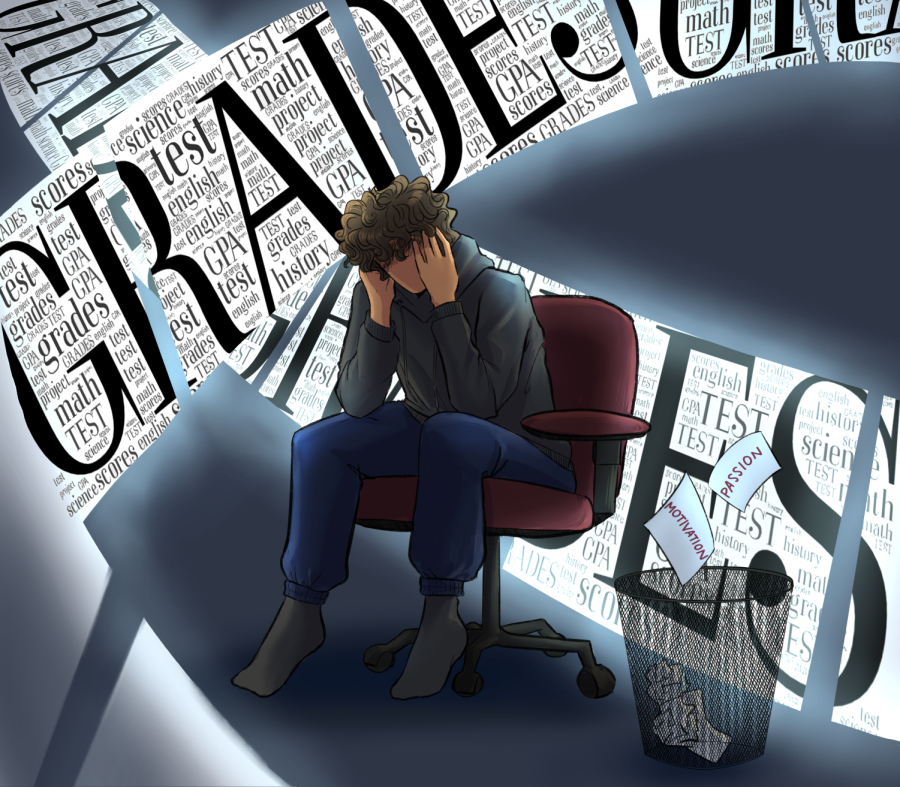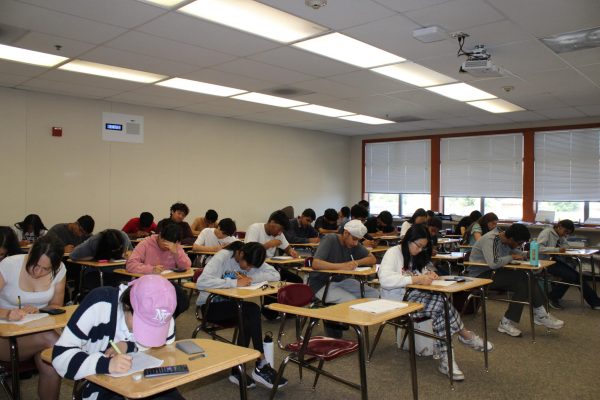Standard based grading better than traditional
Traditional grading systems are unfair to students compared to standard based grading.
The traditional grading system we at Cal High are accustomed to, which uses the grades A-F based on tasks of differing grade weights, has become an increasingly outdated way of grading and must be replaced with a standard based grading system, or SBG.
Cal needs SBG because traditional grading doesn’t fairly display a student’s knowledge. Traditional grading is incredibly subjective in classes like English and physical education where bias can easily be taken into account when a teacher grades assignments.
Setting up a grading system and rubric that converts understanding into an equivalent letter grade takes a lot of time for many teachers following the outline of traditional grading.
This tends to form a negative testing culture over a learning culture for students. Students will consider the likelihood of a new concept being on a test rather than putting effort into really understanding information.
The standard based grading system avoids these issues completely, with accommodations that ultimately support a student’s overall learning experience as well as the outcome of their grades.
In SBG, students are only graded on the final test of the course, while the rest of the curriculum is deemed as practice, and therefore, not graded. Not all students learn at the same pace, and the only thing that should matter in a grade is if a student can demonstrate the desired skills learned from a course regardless of how long it takes for them to understand a concept.
Students who require specific learning accommodations or just have general difficulties when it comes to in-class learning need a more lenient grading system to fairly judge their academic progress, and standard based grading is just what they need.
Students are graded from 1-4. It is known across most sources that the grades each are tied to a proficiency level: 1 is Minimal, 2 is Basic, 3 is Proficient and 4 is Advanced.
“Using Robert Marzano’s scales, our system outlines beginning, approaching, meeting, and advanced application of the standard,” said Brad Neuendorf from The National Association of Secondary School Principals.
“The concise, four-point grading scale makes it very easy for teachers to calibrate their assessment of a student’s level to ensure every student is assessed equally.”
A grading system four-point scale based on skill proficiency better assesses student performance by focusing more on a student’s specific abilities. The world language department grades similarly to SBG, test grades being: Mastery, Proficient, Emerging, and Needs Improvement.
Additionally, standard based grading just gives a better insight on academic progress. Unlike traditional grading where percentage grades can range from a hundred outcomes, SBG simply has a general view of a student’s weaknesses and strengths.
SBG would change student academic success through its fairness and would raise the grades of many deserving students. SBG could create a classroom environment where students are more focused on actually understanding a curriculum, rather than focusing on receiving a better grade.

Senior Dallas Nowlin is a Staff Writer at The Californian Paper. Returning for his second year of writing for The Californian, he is eager to write lots...







